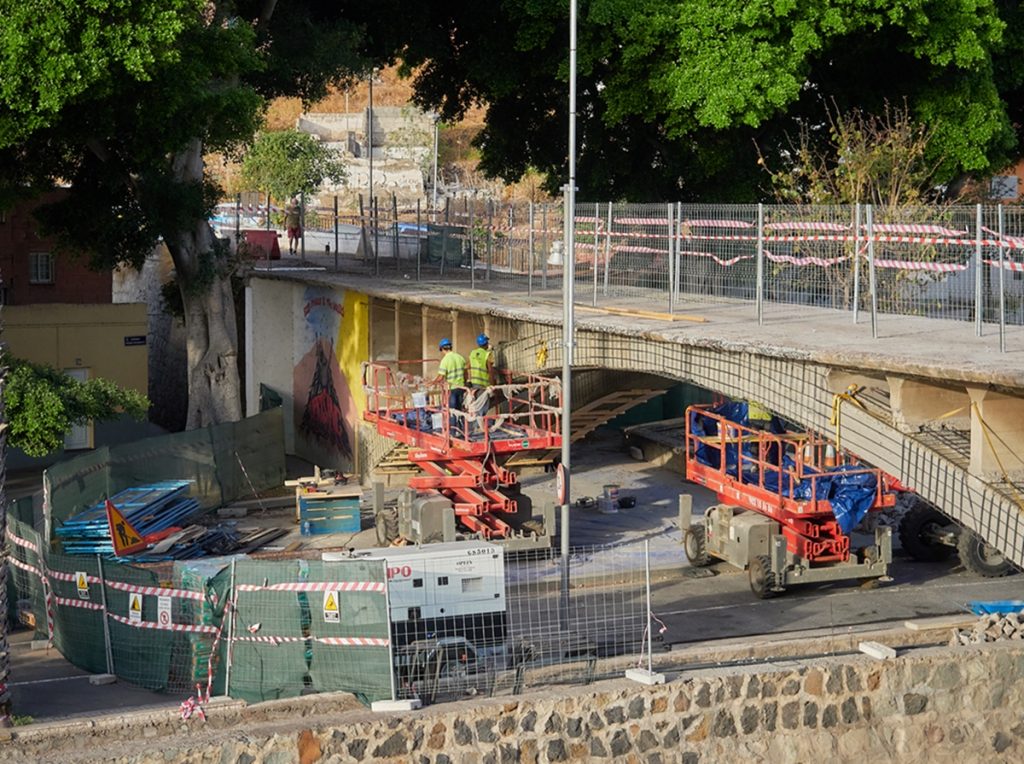
Since the construction of the San Andrés bridge began, the workers have been advancing slowly, but without pause. The meticulous work that they have been carrying out to rescue the structure from the deterioration in which it was plunged, and that forced the closure of this passage to the towns of Anaga, culminated part of their work this week with the beginning of the concreting of the structure of reinforcement, framework whose objective is to increase the bearing capacity of the bridge.
What does not seem to be possible, according to the Councilor for Infrastructures to DIARIO DE AVISOS, Dámaso Arteaga, is that the work is completed in October, as pointed out in the meetings in July as a possibility. “I can’t say an exact end date for now. In the follow-up of the work that we are carrying out, the planned schedule is being fulfilled, but I think that saying that it will be ready in October is going to be very hasty “, explained the mayor.
In addition, he defended that “they are very methodical, conscientious, very specific works. It is a delicate work that has to be done, on many occasions, manually, and we trust that we can move faster from now on, once a steel structure has been placed around the bridge to reinforce it and then concrete it ”.
The mayor assures that, unlike what usually happens with other works, on that occasion, “although it is a slow performance, there has been no stoppage of any kind, nor have added inconveniences arisen”. Some works that are consisting of discovering all the most damaged part of the bridge, eliminating its surface layer and reinforcing the structure, with the aim that vehicles of more than 12 tons can pass. “So far, there is nothing that was not planned. The objective is to guarantee the structure of the bridge ”, he indicated.
Last July began a work whose duration is scheduled in five months, hence advancing to October its completion is hasty. The company awarded this rehabilitation is having to face a series of deficiencies that, according to the preliminary study carried out after the bridge’s closure, ranged from cracks in the arches, to carbonation of the concrete, or even , fissure of one of the arches that support the weight of the bridge.
That first report concluded that “it is undeniable that the state of a reinforced concrete structure begins to compromise the moment the corrosion of its reinforcements appears. As the corrosion progresses, more and more severe damages are produced in the structure, which can make it completely unusable ”. The same report pointed out that “it is important to note that this type of deterioration has an exponential evolution, because, although it is slow to start, its development occurs more quickly once it has started.” It should be remembered that the residents had been denouncing the poor condition of the bridge for years, a deterioration that culminated in the total closure and isolation of Taganana and Almáciga de Santa Cruz for days.
Once it is rehabilitated, with the aim of passing vehicles of more than 25 tons, the operation, as informed to the neighbors in the last meeting with the City Council in July, will be as it had until the moment, that is, the traffic light that was implemented in 2019 will be maintained and it will continue with a single lane of passage. As for the second bridge, whose project, the capital city council assured, has already been commissioned, the deadlines are unknown.














